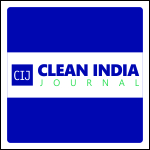
India is the world’s largest producer of bananas with over 30 million tonnes of annual production. This contributes to significant amounts of agricultural waste and poses a challenge to banana farmers. A dynamic entrepreneur, Jinali Mody, Founder of Banofi Leather, a material science startup, in conversation with Keerthana Sundar, Special Correspondent, Clean India Journal shares her successful innovation of creating a plant-based leather alternative by upcycling banana crop waste.
The enormous footprint of leather production begins with raising cattle and proceeds to the polluting processes of tanning and dyeing.
With a worldwide burgeoning demand for ethical fashion, brands are turning to cruelty-free leathers like those extracted from fossil fuel-extracted plastic materials like PU or PVC. Such alternatives decimate animals from the manufacturing process but use plastic as the main source. This translates to products that are not biodegradable and rely on a carbon-intensive resource: petroleum. Food waste, on the other hand, contributes to about 10% of the global greenhouse gas emissions.
The solution to this two-pronged issue is explored globally by dipping into various food wastes to find sustainable alternatives.


“Bananas became the go-to choice as it is available throughout the year and unfortunately, 85-95% of the crop is wasted annually. Our mission is to protect our planet by creating plant-based leather from banana crop waste. We dedicated ourselves to creating leather, which looks, feels, and smells like traditional leather but is vegan, sustainable and plant based.”
Approximately, one kilogram of fruit corresponds to 10kg of waste. Once the fruits are harvested, the banana plant has to be cut. The leaves are used for the manufacture of plates but less than one per cent of the banana stem is used. This abundance of crop waste eliminates the paucity associated with procuring raw materials.

The high percentage of plant waste in the leather composition translates to a 95% waste reduction, a 90% reduction in water usage, 80%-plus reduction in carbon emissions, and 100% reduction in toxic waste compared to animal leather. It closely matches animal leather in characteristics like tear strength, flexibility, look, and feel. Currently suitable for bags and wallets, banana leather also has the potential for being used to make shoes and apparel.
The manufactured leather is sold in sheets and is currently priced at `300 per sqft. Around 2,000kg of banana stem yields roughly 3,000 leather sheets per month. The waste generated during the manufacturing process goes back to the farmers to be used as fertilizer and this makes the process sustainable. There is an avenue for job generation among the local farming community as they contribute immensely to such sustainable ventures.


































